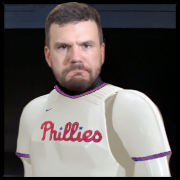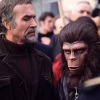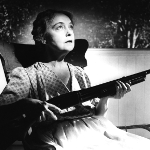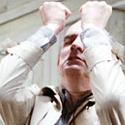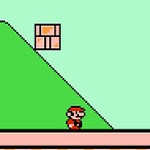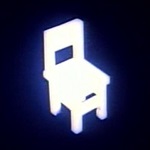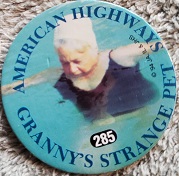|
There wasn't anything wrong with the theatrical cut ending is my whole point  Magicing them up to the surface is a little weak I suppose but you've been watching for 2 1/2 hours by that point. Having the aliens replay Ed Harris' and Lindsey's teletype interaction is enough to show a connection has been made between the humans and aliens without bringing moralizing into it. The central theme of the story was handled just fine entirely within the preceding two hours. I guess my point is the theatrical cut aliens are mysterious and ethereal; they show the humans a glimpse of something greater than them and the moral core of the story is our conflicting response to it represented by Lindsey who wants to reach out and touch it and Coffey who wants to blow it the gently caress up. The director's cut aliens aren't a glimpse of the mysterious and ethereal beyond our own experience; they're dad barging in and settling the argument by saying Lindsey's right and everyone shut the gently caress up or i'll turn this planet around and go back home. It makes them part of the human moral dilemma but just retreads the same ideas of the first 80% of the movie and undermines the theme by failing to be the blank page on which the humans paint their prejudices on. And I have now officially written way too much about The Abyss. Edit: awesome time for a snipe vvv I'm finding that to be less true as HD TVs become widespread. Are there even any network shows filmed in 4:3 anymore? Dr Monkeysee fucked around with this message at 06:57 on Nov 4, 2010 |
|
|
|

|
| # ? May 18, 2024 00:44 |
|
Why are TV stations so against showing films in letterbox?
|
|
|
|
^ ^ ^ Lots of reasons. They're are still a lot of people who complain when their screen isn't filled and for the longest time it was only a few rare shows that stuck to their guns and broadcast letterbox (ER springs to mind). Also you have to consider standard def TV broadcasting to be one of the most compromised ways to watch a movie. They're edited for time, cut for profanity, sex, and violence, plus they've got commercial breaks throwing the pacing out of whack. Really, there's not a lot of call for preserving the artistic integrity of the movie in such a format. Monkeyseesaw posted:... Yeah but you can't really say the aliens are non-interacting considering they essentially announce their presence by the end of the theatrical by floating their entire city to the surface. It's not like the end of Sphere where everyone goes "what the gently caress happened? ...well, back to be our regular selves with no character growth". I saw the theatrical version first many times before the special edition but I think the only real differential between theatrical and special edition is that in the former the aliens knock on humanity's door and are all "what up" and in the SE they're "what up, bitches". The basic breakdown of the story is that humans have brought nuclear weapons to the alien doorstep. Nuclear subs and bombs are literally on top of them, so it isn't quite like The Day the Earth Stood Still where offworlders come down and tell us to cut it out. Any one of our half dozen or so sub failures could be a threat to them and there's no telling what active marine warfare might be like for them. They have a stake and in both the theatrical and SE they raise their stake by making their presence explicitly known. Ape Agitator fucked around with this message at 08:35 on Nov 4, 2010 |
|
|
|
Red posted:Why are TV stations so against showing films in letterbox? Because there are still people out there like my wife's parents that 1. Don't have HDTVs which are 16:9 and 2. think that the black bars are THEM LOSING SOME OF THE MOVIE Monkeyseesaw posted:vvv I'm finding that to be less true as HD TVs become widespread. Are there even any network shows filmed in 4:3 anymore? I think almost everything shoots in a wide format but most shows are framed so that everything happens in the old 4:3 frame because they just crop it for an SD broadcast. This creates all kinds of retarded composition problems, especially on news programs or with titles/credits.
|
|
|
|
The Wire did some really cool poo poo with a 4:3 format. I can't actually picture that show in widescreen. 4:3 is both underused and under appreciated. Some of my favorite movies use that aspect ratio.
|
|
|
|
Why do they care what SDTV owners think? If grandma wants to watch "Georgia Rule" then I doubt the black bars are going to stop her. Hell, even if she does change the channel, she'll probably wind up on a different one owned by the same media conglomerate, so they lose nothing. It's not like people are going to stop watching TV. (Actually, I've noticed a lot of shows are letterboxed, now, so I think people are getting less annoyed with it.)
|
|
|
|
LtKenFrankenstein posted:4:3 is both underused and under appreciated. Some of my favorite movies use that aspect ratio. This is true in a sense but you could technically say it about nearly any aspect ratio though. But there's been like four or five decades of television development and how many shows applied any recognizable artistry to the aspect ratio format? Compared to the interesting and useful work done with 1.85:1 and 2.35:1, it certainly didn't capture the imagination. And it's kind of hard to apply the rule of thirds in a confined format like that. It could certainly be the case that the format was underappreciated but it was used far too many times for far too many extremely creative projects for there to be a lot of additional creative blood to be wrung from that stone. I mean, it's not like it's the IMAX format or something. BrewingTea posted:Why do they care what SDTV owners think? If grandma wants to watch "Georgia Rule" then I doubt the black bars are going to stop her. There are only like a third of the households in the US with an HDTV (I think it's like 39 mil out of 111 mil). That's far too many eyeballs to not care what they think. And I think any video store clerk will tell you that people will absolutely stop watching something if it has black bars, as in that case they will actually get in a car and drive back to the store to complain about it. The real problem is that they need to make sure the eyeballs rest in the most lucrative spot. A television ad run on ABC nets a hell of a lot more money than an ad on HGTV. And what if they ended up watching CBS or, god forbid, NBC? The horror. You are right that the number of shows which letterbox has increased, which is a true positive. But they're not throwaway stuff like movies on a television channel. Ape Agitator fucked around with this message at 17:34 on Nov 4, 2010 |
|
|
|
LtKenFrankenstein posted:The Wire did some really cool poo poo with a 4:3 format. I can't actually picture that show in widescreen. There's nothing wrong with 4:3. The problem is they are shooting stuff in 16:9 then cropping out the sides. It doesn't look good in 16:9 because everything is in the middle and it doesn't generally look good in 4:3 either because they are shooting it 16:9. It just creates bad compositions in both directions.
|
|
|
|
LtKenFrankenstein posted:The Wire did some really cool poo poo with a 4:3 format. I can't actually picture that show in widescreen. 4:3 is really hard to compose for. As much as a disciple of The Wire as I am, it really did nothing for me cinemtographically with the possible exception of shooting in the vacants.
|
|
|
|
NeuroticErotica posted:4:3 is really hard to compose for. As much as a disciple of The Wire as I am, it really did nothing for me cinemtographically with the possible exception of shooting in the vacants. The drab aesthetic is part of what makes the show so effective, though.
|
|
|
|
4:3 is a pretty uncomfortable ratio. It's cramped and pretty difficult to find nice compositions for. But something about that and about the way it's been used historically gives it a weird kind of, I dunno, honesty? Like, it's hard to imagine The Blair Witch Project being as effective in 16:9. There's something about how clunky and cramped it is that just works. The Wire would've been great in widescreen. It didn't gain anything from its ratio. Homicide: Life on the Street, on the other hand, loving THRIVED on being in 16mm 4:3.
|
|
|
|
LtKenFrankenstein posted:The Wire did some really cool poo poo with a 4:3 format. What exactly would that be? I'm kind of curious because I never even thought "Hey, that's a neat use of 4:3" while watching the show. I guess if you cropped it to 16:9 it would lose something but that would apply to nearly anything that's 4:3, wouldn't it?
|
|
|
|
penismightier posted:4:3 is a pretty uncomfortable ratio. It's cramped and pretty difficult to find nice compositions for.  
|
|
|
|
 Hell yeah 4:3.
|
|
|
|
SubG: Yeah but he was Kurosawa. Besides, look at the cool poo poo he did with widescreen in the later years. I mean, there's no question that there's beautiful beautiful movies in the format. But there's not so very many that wouldn't be just as beautiful if not more in a wider format. Maybe Joan of Arc wouldn't. Some of the Keaton stuff.
|
|
|
|
For still photography, at least, I've found more square formats to work really well with heavy formalism and with depth. Respectively, it gives me a stronger sense of geometry and makes it easier to frame out less structured areas, and being able to move across the image horizontally heightens inward movement. Edit: ^^^^^ Yeah, I remember being much more aware of the 4:3 compositions in Rashomon than I normally am, mainly because of Kurosawa's formalism. And The Third Man is a perfect example of that inward motion. Aorist fucked around with this message at 23:04 on Nov 4, 2010 |
|
|
|
"Cinemascope... it's only good for snakes and funerals!" - Fritz Lang in Contempt (a film shot in Cinemascope)
|
|
|
|
penismightier posted:SubG: Yeah but he was Kurosawa. Besides, look at the cool poo poo he did with widescreen in the later years.    For example. I mean I also love a lot of widescreen films---it's impossible to imagine Sergio Leone's films shot in Academy. But my point is there's nothing inherently cramped or uncomfortable with every film made before the mid '50s.
|
|
|
|
SubG posted:But my point is there's nothing inherently cramped or uncomfortable with every film made before the mid '50s. Well, no, but it's like how when color came around and the use of black and white became an artistic decision, subsequent black and white movies have a certain "feel" that they wouldn't have in an earlier era. There's something fantastical about them. A movie shot in 4:3 in our era, because it's now an artistic decision, has a "feel" that it didn't have before. I think that's a claustrophobic, lo-fi look. EDIT: And, more to the point, I think it was a mistake for The Wire. penismightier fucked around with this message at 23:17 on Nov 4, 2010 |
|
|
|
penismightier posted:Well, no, but it's like how when color came around and the use of black and white became an artistic decision, subsequent black and white movies have a certain "feel" that they wouldn't have in an earlier era. There's something fantastical about them. A movie shot in 4:3 in our era, because it's now an artistic decision, has a "feel" that it didn't have before. I think that's a claustrophobic, lo-fi look.
|
|
|
|
penismightier posted:Well, no, but it's like how when color came around and the use of black and white became an artistic decision, subsequent black and white movies have a certain "feel" that they wouldn't have in an earlier era. There's something fantastical about them. A movie shot in 4:3 in our era, because it's now an artistic decision, has a "feel" that it didn't have before. I think that's a claustrophobic, lo-fi look. I don't think it's a mistake at all. That show's goal was to be as realistic and down-to-earth as possible, and 4:3 is a format used for things like news programs. In our minds, I think we make that subtle association and widescreen would make it seem more like a "TV show" or "movie".
|
|
|
|
SubG posted:And I think that, if anything, it's the opposite. If all you're thinking about is a tight closeup of a face or something like that, sure. But it's a hell of a lot easier to pile vertical space over a character in a frame in Academy than it is in a widescreen ratio. It's also easier to put depth into a single frame, particularly if you want the depth to be unbalanced across the frame (Murnau's Sunrise (1927) uses this frequenty, for example). Vertical space I'll agree on for sure, and I see what you're saying about how 4:3 gives more breathing room in the z-axis but I don't think it's significant enough to outweigh the tightness in the x-axis. Held side-by-side (and, psychologically, I only feel it when it's a recent production in which I am aware of the choice made), 4:3 against 16:9 feels deep and narrow. It's not a flaw with the format and it doesn't mean that every movie before goddamn Scope feels tight, but it DOES mean that if you have the choice to compose your image for 4:3 or 16:9, and you pick 4:3, you're picking the close, intimate format. Sometimes that's the best choice (Homicide), sometimes it's not.
|
|
|
|
I'm going through Six Feet Under now and it's really jarring when they started using 16:9 in season 3. I think 4:3 fits the intimate mood of the show and more importantly it was a mistake to switch up the format halfway through the show's run.
|
|
|
|
Monkeyseesaw posted:The director's cut aliens aren't a glimpse of the mysterious and ethereal beyond our own experience; they're dad barging in and settling the argument by saying Lindsey's right and everyone shut the gently caress up or i'll turn this planet around and go back home. That could be one weakness of the extended..they show the violence montage but then threaten us with their even more superior technology? "Don't bring nukes by us or we'll drop these 1,000 foot waves on you" OR maybe they would never drop the waves on us and they were just showing off.
|
|
|
|
penismightier posted:Vertical space I'll agree on for sure, and I see what you're saying about how 4:3 gives more breathing room in the z-axis but I don't think it's significant enough to outweigh the tightness in the x-axis. If anything, I think that widescreen makes it easier to have a character lost in mise-en-scène---lost among other things in the frame or on-screen landscape---while Academy makes it easier to lose a character in space just using the framing. You put a small figure dead center in a symmetrical frame (like the door shot in Welles' The Trial (1962)---which granted is 1.66 and not Academy) they look a lot more lost in an expanse of space---the opposite of a claustrophobic framing---than they would in a wider frame. You see this in a lot of German expressionism (which obviously influenced Welles). I wish there were more screenshots from Sunrise (1927) available online. I think a good illustration of this is the different aspect ratio presentations of The Shining (1980). I'm not going to argue the merits of the different versions, but I definitely think that a lot of the very symmetrically-blocked out shots, particularly the one-shot portraits, really `feel' a lot more like the character is lost in an abstract space in the 1.33 presentation than in the 1.66 or 1.87.
|
|
|
|
This made me remember that collection of Tarkovsky's polaroids that was posted online a while back, which then made me realize that Mirror is 4:3. Didn't even notice. Looking at it again with that in mind, it definitely complements the intimate style.
|
|
|
|
Colonel Whitey posted:I don't think it's a mistake at all. That show's goal was to be as realistic and down-to-earth as possible, and 4:3 is a format used for things like news programs. In our minds, I think we make that subtle association and widescreen would make it seem more like a "TV show" or "movie". This is basically what I was trying to get at. Not to turn this into TVIV, but The Wire's 4:3 format assisted greatly with the dual world presented in the show. The police procedural scenes retained the same visual look of conventional television cop shows. When the show went into the streets though, the format got a lot more impressionistic, making everything seem very cramped and claustrophobic. The big scene I think of in regards to this is Stringer's death scene in season 3. The cramped format makes the violence really spring up out of nowhere, and drives home the feeling of no escape. To bring it back to movies, Bergman did a lot of really cool poo poo in 4:3. Wild Strawberries sticks out in my mind as a prime example. Uncle Boogeyman fucked around with this message at 05:55 on Nov 5, 2010 |
|
|
|
4:3 works best if the filmmaker takes advantage of its height and works with its constrictions. Ingmar Bergman and Sven Nykvist, for example, benefited greatly from the format, using it creatively for not just relentless close-ups but for images such as this or this or this. Kubrick, too, managed it really well, using wide lenses to give his open-matte frames a striking hugeness (often taking in both the ceiling and the floor). My personal favorite kind of frame is a wide, deep, large 1.85:1, such as in Paris, Texas, El Norte, or North By Northwest, deep if just because constantly shallow frames are boring to look at, and tend to imply laziness (who gives a poo poo about the mise en scene it's just gonna be a big blur anyways right guys?). Anamorphic widescreen, though, deserves a mention, if just for Paul Thomas Anderson's big lovely wide compositions.
Magic Hate Ball fucked around with this message at 19:08 on Nov 5, 2010 |
|
|
|
Magic Hate Ball posted:4:3 works best if the filmmaker takes advantage of its height and works with its constrictions. Ingmar Bergman and Sven Nykvist, for example, benefited greatly from the format, using it creatively for not just relentless close-ups but for images such as this or this or this. Kubrick, too, managed it really well, using wide lenses to give his open-matte frames a striking hugeness (often taking in both the ceiling and the floor). My personal favorite kind of frame is a wide, deep, large 1.85:1, such as in Paris, Texas, El Norte, or North By Northwest, deep if just because constantly shallow frames are boring to look at, and tend to imply laziness (who gives a poo poo about the mise en scene it's just gonna be a big blur anyways right guys?). Anamorphic widescreen, though, deserves a mention, if just for Paul Thomas Anderson's big lovely wide compositions. None of your links work.
|
|
|
|
Crap. edit: they should work now. Magic Hate Ball fucked around with this message at 19:08 on Nov 5, 2010 |
|
|
|
It's funny that pretty much right after I read this conversation I watched Persona for the first time and the times I wasn't thinking "this is amazing" or "what they gently caress?" I was thinking, there's no way this movie would actually be visually improved by being in 16:9.
|
|
|
|
I haven't actually seen it but I've heard really great things about the Imax presentation of The Dark Knight, which isn't 4:3, but does have a taller frame than 16:9. Specifically the composition of the sequences shot in Imax, which were able to show the height of the buildings better. To give a more recent example of effective use of squarer formats In general most talented directors or DPs could probably make beautiful movies in either format, as long as they were shooting with the format in mind. Because of the Noirvember thread, I'm watching a bunch of movies in 4:3 and there is some impressive stuff done with the camera.
|
|
|
|
From what I've read, Orson Welles really wanted to shoot Touch of Evil in CinemaScope. Since it was 1958, studios were still generally picky about which films got the treatment. Mainly because it was was crazy expensive to rent the lens and the license to use the CinemaScope trademark was also crazy expensive. Welles at least shot it for regular "flat" widescreen (1.85:1), but it would have been neat to see what he could do with a scope frame. I'd imagine it would be a lot like how Nicholas Ray had a lot of deep focus in his King of Kings by using a split-diopter.
|
|
|
|
Skwirl posted:I haven't actually seen it but I've heard really great things about the Imax presentation of The Dark Knight, which isn't 4:3, but does have a taller frame than 16:9. Specifically the composition of the sequences shot in Imax, which were able to show the height of the buildings better. To give a more recent example of effective use of squarer formats It's odd you mention that film. I finally got around to watching my Blu-Ray of DK, and the switch between letterbox and fullscreen was a little distracting at times. At first, the film only used it for shots of Gotham City (well, Chicago, but you know what I mean), or shots of the skyscraper in Hong Kong. Later in the film, however, they use the IMAX shots for some of the action sequences with Batman/SWAT Team/Joker. You'd get used to fullscreen, then randomly jump back to letterbox. I'd rather they stuck with a single format, or at least, let you choose the format you see it in. Watching it in IMAX in the theater, I didn't notice a real difference. The IMAX presentation was in an AMC theater, using a special IMAX screen - which was slightly taller than the regular one.
|
|
|
|
This is been my favorite thread to catch up on lately, I'm at page 60.  I just saw 12 Monkeys for the first time last night. I'm planning on watching it again soon, but I had a question, spoilered just in case: The "raspy voice" that Cole hears the whole time... in his head? Not? Is the question the whole point and I'm dumb for questioning it?
|
|
|
|
Quad posted:This is been my favorite thread to catch up on lately, I'm at page 60. I guess it might be interpretive but I'm fairly sure it is in his head considering he really is quite insane from the get go. However, the voice is (to my recollection) very, very sane and is reflected in the "advice" he gets from time to time from people. I think it's just the part of his psyche which works despite the insane life and task he is undertaking. It really is a great movie and I'm now inclined to pop my disc in.
|
|
|
|
I think you're right, especially considering that the voice "follows him" into the past towards the end, when constant trips have made him more scrambled.
|
|
|
|
Red posted:
Not to derail the thread but I wish IMAX would cease whoring out their name to every theater whom adds 2 inches to their screen. I know very few people who have actually been to a real IMAX theater, yet hundreds who believe they have seen a film in IMAX proper. This is maddening, IMAX has seriously ruined their brand name with these psuedo-IMAX theaters. Great way to gently caress people out of their money though, all while the consumer remains none the wiser. This false advertising could be a good thing however, Avatar in true IMAX made me viciously ill, while the 'baby IMAX' viewing gave me no problems.
|
|
|
|
Canada has many of the real ones, since it was invented here. I don't think I've seen a fake IMAX screen in Canada. vvv Yeah, helicopter shots on IMAX are amazing. vvv Aphrodite fucked around with this message at 23:54 on Nov 6, 2010 |
|
|
|

|
| # ? May 18, 2024 00:44 |
|
sursumdeorsum posted:Not to derail the thread but I wish IMAX would cease whoring out their name to every theater whom adds 2 inches to their screen. A really good IMAX theater can really mess with you. When I was about ten, I went to the IMAX theater in the Baltimore Science Center to see some documentary about the Pacific Ring of Fire. I had never seen a screen that size, and was close enough that the screen took up all of my peripheral vision on both sides. The opening shot cut from black to a straight-down helicopter shot of Los Angeles from about a thousand feet up. It gave me an actual physical reaction of vertigo and nausea, made me jump back in my seat and grip the armrests will all my strength to avoid 'falling' forward. The best part? I googled the BSC to see if the IMAX theater is still there. Guess what film is playing today?
|
|
|





